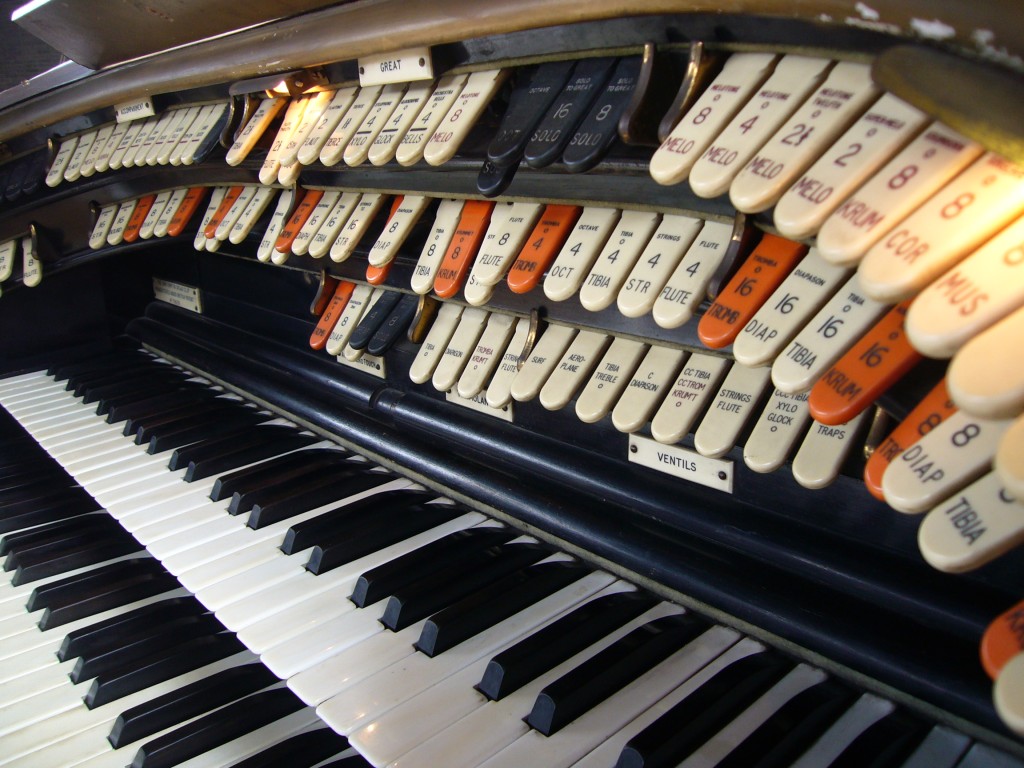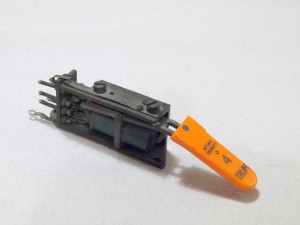Direct electric stop actions are modular units, one per stopkey, which contain the following:

• a pivoting arm on which the stopkey is mounted, with about 15 degrees of angular movement. The arm is provided with a bias (either spring or magnetic) to maintain it in the ‘off’ (upper) or ‘on’ (lower) position.
• a pair of solenoid coils which when energised move the pivoting arm from ‘on’ to ‘off’ or vice-versa. These are controlled by the combination memory.
• a switch (either a pair of contacts or a reed-switch) which makes when the arm is in the ‘on’ position. The switch when made sends a signal to the organ relay to indicate that the stop should be ‘on’.
Some builders (such as Comptons) also fitted a second touch cancelling feature – press an ‘on’ stopkey against a harder spring, and any other stopkeys which are ‘on’ move to the ‘off’ position.
Consoles with direct electric stop actions were built by Comptons and, latterly, Christies.

Such units are sometimes referred to as “SAMs” (Stop Action Magnets); this is a trade mark of the Syndyne Corporation.
The term ‘Direct Electric Action’ is also used to denote windchest actions where the prime mover for the pallet that admits air to the pipe is an electrical solenoid, rather than the pneumatic motor found in the electro-pneumatic windchests commonly used in theatre organs. This term was widely used by the Austin Organ Company of Hartford, Connecticut, for their instruments.
See further:
